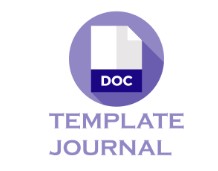PENGARUH HORMON PERTUMBUHAN REKOMBINAN TERHADAP KANDUNGAN FOSPAT PADA PEMELIHARAAN IKAN NILA (Oreochromis niloticus L) DALAM AKUARIUM
Abstract
Peningkatan kandungan fospat akan menjadi beban pencemaran bagi perairan, sehingga perlu melakukan penelitian untuk mengetahui seberapa banyak kandungan fospat hasil kegiatan budidaya ikan yang dikeluarkan ikan sebagai feses untuk mengurangi beban pencemaran akibat kandungan fospat dalam pakan ikan. Penelitian ini menggunakan metode probability dengan rancangan penelitian acak lengkap (RAL) dengan 4 perlakuan dan 3 pengulangan sehingga dihasilkan 12 unit percobaan. Hasil uji ANOVA menunjukkan pemberian hormon pertumbuhan rekombinan tidak berpengaruh nyata terhadap kandungan fospat dalam air pemeliharaan ikan nila. Kandungan fospat dalam air dapat menurunkan kandungan fospat sebesar 0,20-0,81 mg/l selama 30 hari. Nilai laju pertumbuhan berat relatif ikan nila yang diberi rGH mampu meningkatkan berat ikan dibanding kontrol dengan rerata tertinggi pada perlakuan A sebesar 53,91% dengan berat selama 30 hari. Analisa fospat dalam feses ikan menunjukkan bahwa pemberian rGH mengalami fluktuasi nilai sebesar 2,02-6,17% selama 15 hari. Pengukuran parameter kualitas air suhu, DO dan pH masih dalam kisaran optimal untuk kehidupan dan pertumbuhan ikan nila. Dengan demikian dapat disimpulkan bahwa pemberian rGH menurunkan kandungan fospat 0,20-81 mg/l dibandingkan kontrol.
The improvement of phosphat substance would be a load of pollution for waters. Therefore, a research should have been conducted to examine the content of phosphate on the production of fish cultivation which left by fish as feces to reduce the load of pollution resulted from the content of phosphate in fish feed. This research used probability method on complete random design (RAL) with 4 treatments and 3 repetitions led to 12 experimental units. The result of ANOVA test showed that the distribution of recombinant growth hormone did not have significant effect toward the content of phosphate in the water of tilapia cultivation. The content of phosphate in the water could reduce the content of phosphate as much as 0,20-0,81 mg/l in 30 days. The growth rate value of the relative weight of tilapia which given rGH was able to increase the fish weight compared to the control group with the highest average on treatment A was 53,91% in 30 days. The analysis of phosphate in fish feces showed that the distribution of rGH had fluctuation as much as 2,02-6,17% in 15 days. The measurement of the parameter of water quality, temperature, DO, and pH, was still optimal for the biota and the growth of tilapia. As a result, it could be concluded that the distribution of rGH reduced the content of phosphate as much as 0,20-81 mg/l compared to the control group.




